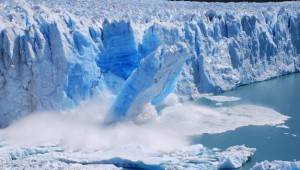Melting of glaciers in West Antarctica is irreversible
Wednesday, May 14th, 2014 7:11:17 by Khalil Khan
The collapse of the glaciers in the vast region of the West Antarctic ice seems inevitable. Two independent scientific teams but working on the same area come to the same conclusion that the process, which can be accelerated in the future has already begun. The good news, says the Science journal, which disclosed one of the research is that although the word collapse involving rapid change, the fastest scenario is 200 years and the slower 1000. But the bad news is that this collapse is inevitable. And such is the amount of accumulated ice in West Antarctica, their merger would cause an elevation of 1.2 meters from the sea. “This sector is one of the main to the sea level rise in the decades and centuries to come,” said Eric Rignot glaciologist, a scientist at the University of California at Irvine and NASA’s Jet Propulsion Laboratory.
Although the processes involved are complex, scientists say the flow of warmer waters around the white continent as main trigger that goes past the edge of the glaciers to make them more fragile. “So far when we saw the glacier did not know if it would slow later spontaneously or some feedback effect,” said Ian Joughin, a glaciologist at the University of Washington and leader of the group discloses its results in Science this week. ” No real stabilization mechanism we can see,” he adds.
Antarctica is an especially difficult for scientists to climate change, where multiple factors intersect and influence one another pitfall. There is increasing air temperature there occurs what alterations, but the warming ocean waters, changes in wind patterns that push the icy shores, the dynamics of glaciers and so on. In particular, there have been long debates on the stability of glaciers in the western region.
Joughin and colleagues have focused on a glacier in particular, Thwaites, to investigate their sensitivity to the melting caused by warming of the sea and its stability. They have developed advanced model combined with satellite data input to reproduce the evolution of mass of ice in the last 18 years, which validates its reliability. Then they let it go forward simulation in different scenarios ice melting rate, depending on the amount of warming. In the worst case, the rate of ice loss remains moderate during the next 200 years and then begins the accelerated phase of collapse; in the most conservative case, the process was postponed to 1000 years, but researchers say the most likely scenario is between 200 and 500 years.
The other team of scientists, led by Rignot, found similar conditions disclosing their findings in the journal Geophysical Research Letters. They have occupied six glaciers in West Antarctica, including Thwaites. His conclusion is blunt: “They’ve passed the point of no return.”
The huge expanse of ice in area of the white continent is in irreversible and without any obstacles to ice melting in the ocean, melting is being faster than previously thought. These glaciers contribute greatly to the rise in sea level being recorded on the planet, contributing almost as much water as the ocean annually from whole Greenland ice sheet, they say.
Changes in the flow of glaciers, some of them floating on the sea coast and the slope by moving are the key factors of its evolution. The first point, accelerating the flow of glaciers in that region of the white continent in the last 40 years was already known, the same Rignot and his research group have recently discussed the phenomenon. Now, with new analysis of radar data taken by satellites (especially ERS- 1 and ERS -2 European Space Agency, ESA), deal with the other two factors, the floating part of the glacier and land on which they settle.
As glaciers floating extension increases its slim and researchers say they have both lost weight and now float in areas where they were before resting solidly in the background. The acceleration of the movement of the ice and thinning are directly related: when they flow faster, they stretch and slim so that a further extension becomes floating ice. Topography also influences since in that region the land is under sea level, which means that reducing the glacier does not reach the sea and warmer water accumulates and accelerates melting. In five of the six glaciers studied there are no obstacles in the terrain containing ice.
“The collapse of this sector of Antarctica seems unstoppable and the fact that the retreat of glaciers is occurring simultaneously in a large area suggests that it is triggered by a common cause, such as increasing the amount of heat under the ocean glacier floats, so it seems inevitable to this sector, ” Rignot says.
Short URL: https://www.newspakistan.pk/?p=44006

















